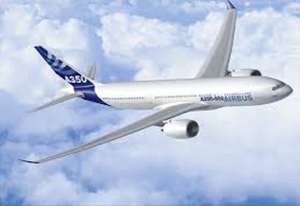 Revenue Management is primarily a business discipline. This generally now includes a Revenue Management Solution (RMS), which is an I.T. system that captures current booked passenger loads, forecasts future unconstrained passenger demand, incorporates anticipated no-shows and cancellations, and then processes this data utilizing a sophisticated mathematical algorithm which optimises the inventory controls in order to maximise the airline’s revenue.
Revenue Management is primarily a business discipline. This generally now includes a Revenue Management Solution (RMS), which is an I.T. system that captures current booked passenger loads, forecasts future unconstrained passenger demand, incorporates anticipated no-shows and cancellations, and then processes this data utilizing a sophisticated mathematical algorithm which optimises the inventory controls in order to maximise the airline’s revenue.
Revenue Management is applicable to any business which has a fixed, perishable resource such as an airline seat, a hotel room, a car rental, or a cruise ship’s cabin. The origins of RM were in the US airline industry at American Airlines in 1985, where deregulation had occurred. This created a highly competitive environment, with new start up carriers such as People’s Express aggressively undercutting traditional airlines with very low fares. American Airlines responded with a new business process supported by a computerised approach to inventory allocation which created Yield Management, now known as Revenue Management. This is now generally regarded as the catalyst for Revenue Management in the airline industry, as the situation gave birth to the World’s first airline RMS, American’s Sabre Airmax. The Revenue management systems developed at American Airlines were recognized by the Edelman Prize committee of INFORM for contributing $1.4 billion in a three year period at the airline. Since the ‘80s many off the shelf RMSs have become available from a variety of vendors, allowing even the smallest carrier to enter the RM arena and to compete with far larger airlines effectively.
There are four essential conditions for revenue management to be applicable in any industry:
1) That there is a fixed amount of resources available for sale.
2) That the resources sold are perishable. This means that there is a time limit to selling the resources, after which they cease to be of value.
3) That different customers are willing to pay a different price for using the same amount of resources.
4) That segmentation can be applied and controlled to differentiate the prices applied to the various products offered within one item e.g. a flight.
Revenue Management is of especially high relevance in cases where the constant costs are relatively high compared to the variable costs. The less variable cost there is, the more the additional revenue earned will contribute to the overall profit. This is because it focuses on maximising expected marginal revenue for a given operation. It optimises resource utilisation by ensuring inventory availability to customers with the highest expected net revenue contribution and extracting the greatest level of ‘willingness to pay’ from the entire customer base. Revenue Management has a proven benefit of 3-9% incremental revenue gains due to Revenue Management activity.



